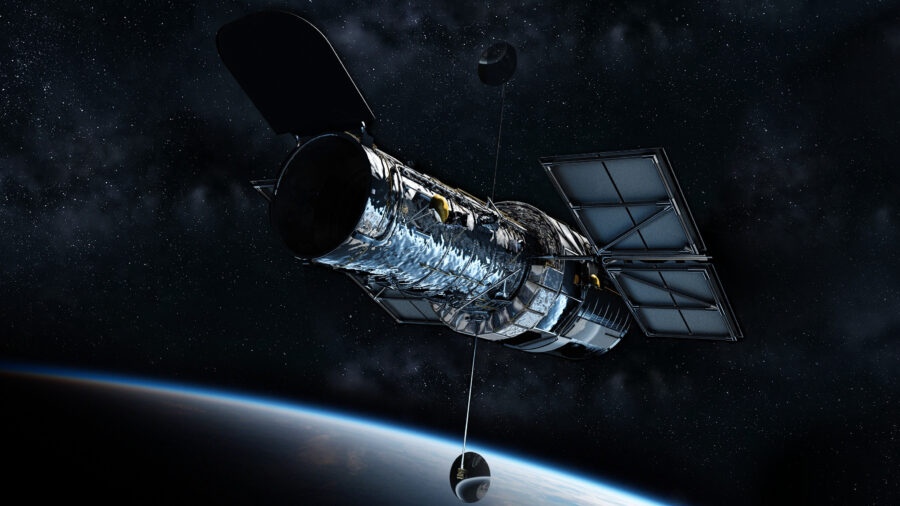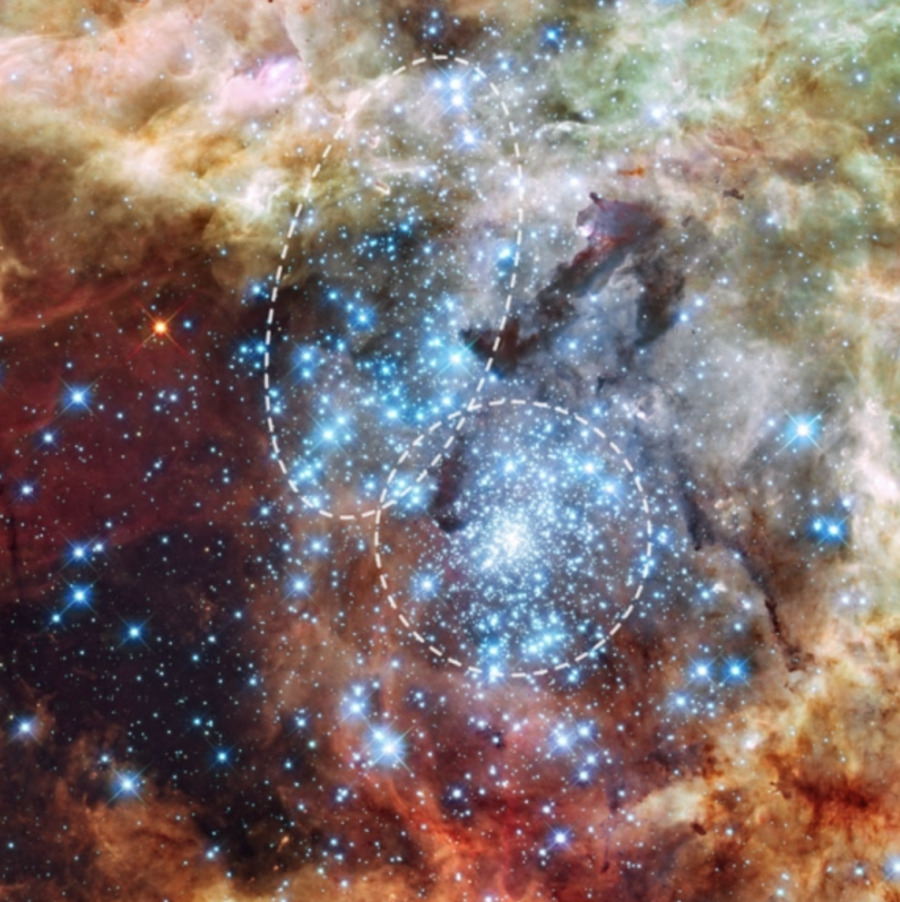See The Rare Cosmic Collision Caught By The Hubble Telescope

Chalk another one up in the “things we thought we knew” column. Deep inside the Tarantula Nebula, what has long been thought to be one gigantic star cluster was found to actually be two different star clusters colliding. Think of it as something like a cosmic traffic accident. Only you wouldn’t be walking away from this one.
The discovery was made only using Hubble data gathered back in 2009, proving yet again that astronomers have more data than they know what to do with.

The Tarantula Nebula, also known as 30 Doradus, is a star-forming region inside our galactic neighbor, the Large Magellanic Cloud, that is situated about 170,000 light years from Earth.
It was in this region where Elena Sabbi of the Space Telescope Science Institute in Baltimore, Maryland and her team were looking for runaway stars (stars expelled at high velocities from their stellar nurseries).
The large number of high-velocity stars in the Tarantula Nebula makes it an ideal place to look for more.
During their survey, she noticed something strange about the cluster she was observing. Instead of the normal spherical shape one would expect, the cluster had an irregular shape that resembled the stretched-out profiles of two galaxies merging.
Further inspection revealed that one of the merging clusters was younger than the other, making their difference all the more apparent.
While an interesting discovery in its own right, the merging star clusters actually go a long way toward explaining the number of runaway stars in the Tarantula Nebula. Runaway stars are thought to be produced by a core collapse, a process in which heavier stars fall in towards the core of a cluster.
Then, as all the heavy stars meet in the middle, their interactions with each other flush them out of the cluster at high velocities like a cosmic toilet. The star cluster in question, known as R136, is far too young to have had its own core collapse, but smaller clusters undergo core collapse at a much faster rate.
If R136 swallowed up these smaller clusters after they had already undergone a core collapse, then that explains why there are an unusually large number of runaways in the Tarantula Nebula.
After this Hubble discovery, scientists were able to find more in the Tarantula Nebula when the James Webb Telescope began working. For starters, it captured a mosaic image of the Tarantula Nebula stretching 340 light-years across. It was also able to provide insights into the detailed structure and composition of the nebula’s gas and dust.












